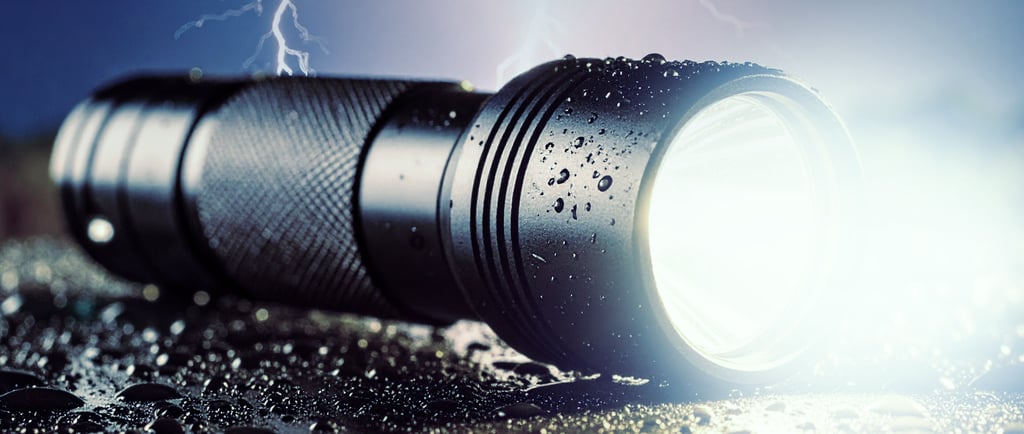Bright Ideas for Dark Times: How to Pick the Perfect Emergency Flashlight
Explore the vital role flashlights play in emergency preparedness and highlights the key features that make them reliable when it matters most. From brightness and battery life to durability and hands-free functionality, it breaks down what to look for in a flashlight so you’re never caught unprepared during blackouts, storms, or unexpected crises. By understanding how the right flashlight can provide safety, confidence, and peace of mind, readers will be equipped to choose a tool that’s not just practical but potentially lifesaving.
SECURITYGADGETS
5/8/20242 min read


When the power goes out or you’re caught in an unexpected situation, one of the most important tools you can have on hand is a dependable flashlight. Emergencies demand clarity, and light does more than illuminate—it provides safety, peace of mind, and the ability to act decisively. Whether you’re navigating through your home during a blackout, signaling for help on the roadside, or dealing with severe weather, a flashlight can turn a stressful moment into one that feels more manageable.
Flashlights are vital because they offer reliability that your smartphone simply can’t. While phone flashlights are convenient for quick use, they drain your battery quickly and aren’t designed for long-term emergencies. A dedicated flashlight, on the other hand, delivers powerful brightness, extended runtime, and durable construction that won’t let you down when conditions get tough.
When choosing a flashlight for emergency preparedness, several factors come into play. Brightness, measured in lumens, is one of the first things to consider. For household use, a flashlight with at least 200 to 500 lumens is usually sufficient, while outdoor or tactical situations often benefit from models that reach over 1000 lumens. Beyond brightness, battery life is a critical feature. In emergencies, power may not be readily available, so it’s wise to choose a flashlight that supports both rechargeable batteries and standard disposable options like AA or AAA. This flexibility ensures you won’t run out of light when you need it most.
Durability is another aspect that can’t be overlooked. Emergencies rarely occur under ideal conditions, and a flashlight should be able to withstand rough handling, rain, or even a fall. Look for models with strong weather resistance and impact protection. Size also plays a role—compact flashlights are great for everyday carry or travel kits, while larger, more powerful models are better suited for staying at home in your emergency supplies.
The features of a flashlight also add to its usefulness. Multiple light modes, such as low, medium, high, strobe, or SOS, give you flexibility for different scenarios. A low setting can help conserve battery life during extended outages, while a strobe or SOS function can be used to signal distress. Some flashlights even offer hands-free options, like magnetic bases or headlamp alternatives, which can make a world of difference when you need both hands for other tasks.
Ultimately, a flashlight is more than just a source of light - it’s a tool for resilience. Emergencies are unpredictable, and having the right gear can reduce panic and increase safety. By investing in a flashlight with reliable brightness, long-lasting power, and a durable design, you’re preparing yourself and your household to face unexpected challenges with confidence. Don’t wait for the next power outage or storm to realize its value; make sure your emergency kit includes a flashlight you can trust.
Note: The photo shown is for illustration purposes only and not of the actual product.


